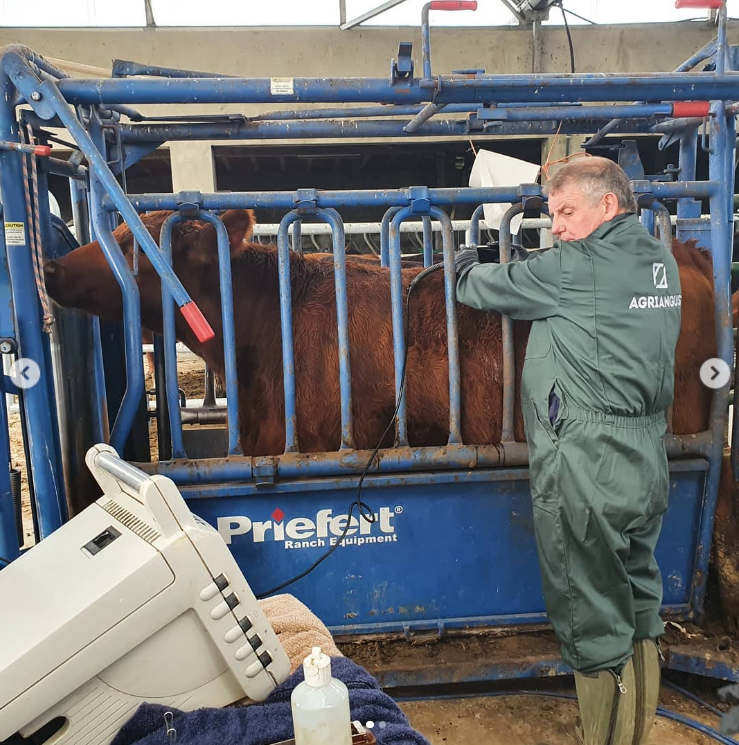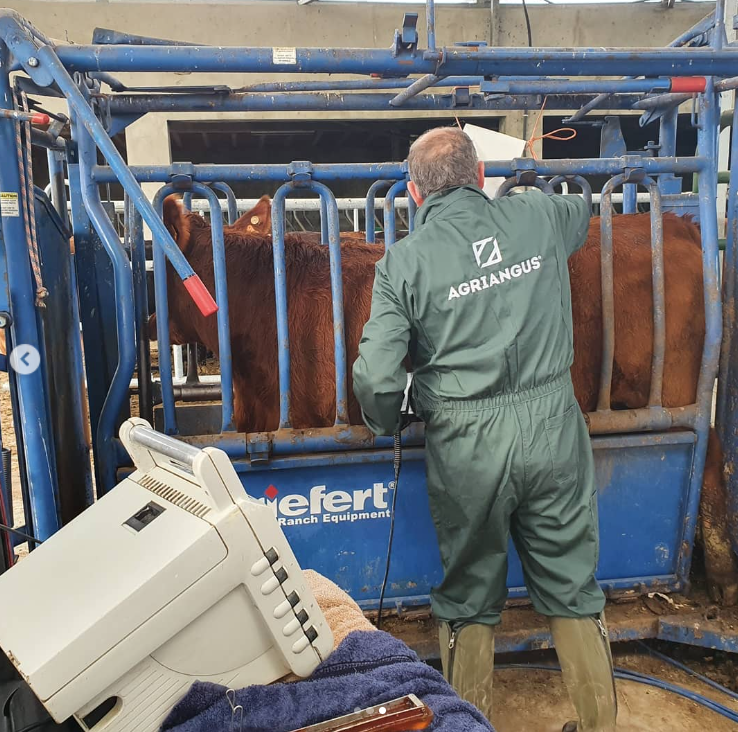Introduction to the challenge addressed
Marbling is the intramuscular fat within the muscle and between the muscle fibres which appears as fine flecks of fat within a muscle. Marbling is a key specification of carcase value in many of high quality beef markets. Marbling generally improves the eating quality of beef, particularly palatability traits such as juiciness and flavour. Intramuscular fat is the last fat deposited in the animal so the finishing stages of an animal are most critical. One of the on-farm strategies that producers can use when they want to produce high quality carcasses is to use sires with good genetics for marbling. Some cattle breedplans include carcass and meat quality in their evaluation, such as for Aberdeen-Angus breed.
Description of Good Practice
Based on Angus Breedplan, the main factors of marbling in beef cattle include a group of important actions that must be integrated into the farmer's management plan.
Genetics
- Marbling is moderately heritable (30-50%) and can be improved through genetic selection.
- Estimated breeding values for can be used to assist with selection.
On-farm and feedlot management effects
- Reduce stress through good temperament and management as this may adversely affect marbling.
- Make all changes to diet gradually to maintain optimum rumen pH and rumen function.
- Provide fresh water at all times.
- Feed twice a day if possible. Any feed that remains in the bunk at the next feeding time should be removed so that it does not spoil or cause intake or illness issues.
- Try to feed at the same time(s) each day.
- Do not double the amount of feed if a feeding is missed. High-starch finishing rations can cause ruminal upset without proper feeding management. It is always better to feed less and work up to a normal amount instead of feeding more.
- Measure feed by weight rather than volume to reduce errors in feeding amounts.
Nutritional effects
- To maximise marbling, cattle must be on a high nutritional plane and be well finished.
- The level of marbling is greater in grain finished cattle due to high energy rations, compared to animals fed lower energy pasture diets.
- The higher the energy in the diet, the more animals will express marbling.
- Growth restrictions earlier in life as a result of feed restriction, drought, or illness will reduce marbling.
Collecting live animal ultrasound scanning information
Live animal ultrasound scanning is a non-invasive technology that allows the seedstock or commercial beef producer to assess the carcase merit of an individual animal whilst still alive as opposed to the collection of carcase data in the chiller.
The carcase attributes most commonly measured by ultrasound scanning include: Rump Fat Depth, Rib Fat Depth, Eye Muscle Area and Intramuscular Fat.
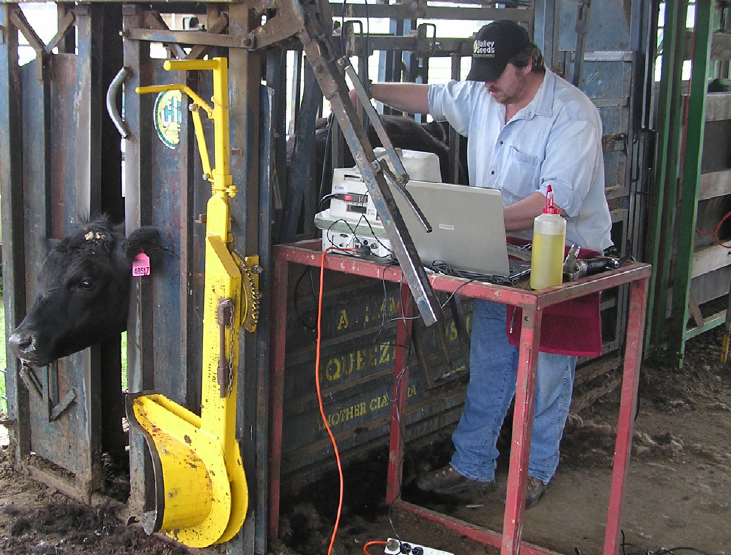
Image from “Collection Guidelines for Angus Breedplan”
Collecting abattoir carcase information
Traits such as carcase yield and meat quality are some of the most economically important traits in the beef supply chain. While the collection of carcase information from ultrasound scanning provides useful information on live animals, abattoir carcase information is of particular value for genetic evaluation as it represents a direct measure of the attributes of a beef carcase. Obtaining direct abattoir carcase measurements can add considerable accuracy to the Carcase EBVs, and consequently provides a valuable source of information when attempting to identify animals with superior carcase genetics for use in a beef breeding program.
Impact on farm performance
The impact of this good practice in the production plan of a beef cattle farm, over time, will allow for a higher quality end product, enabling entry into markets that attribute greater value to the final product.
Audio-visual material
Images provided by Jorge Daniel Ferrario, expert in live animal ultrasound scanning for carcass quality.
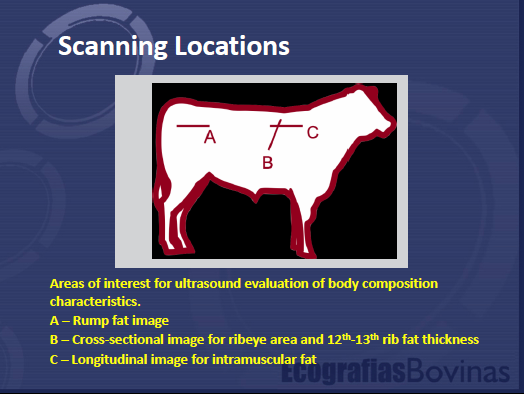
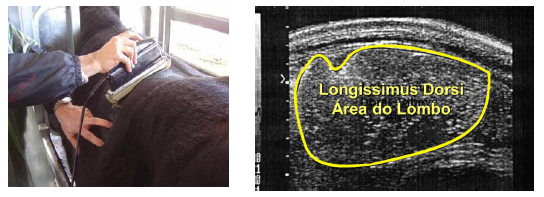
Measuring the rib eye area

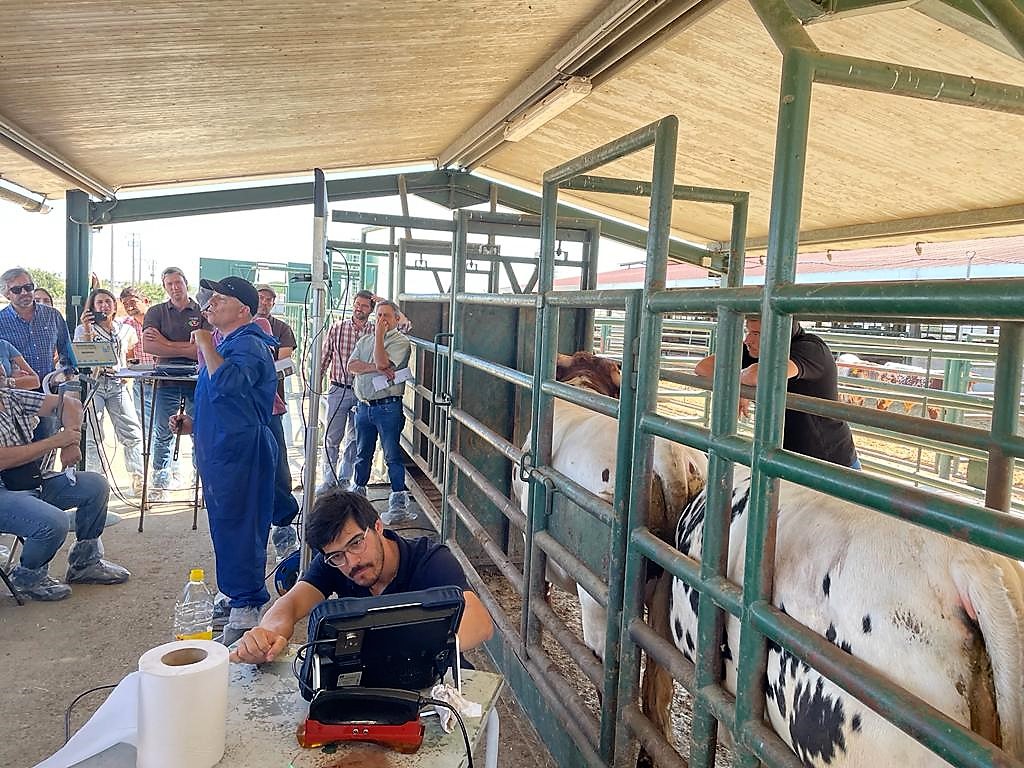
Farmer comment
|
|
|
The implementation of Breedplan on our farm allows us to follow a path towards producing better quality meat for markets that value the final product more.
It also allows us to sell bulls of superior genetics to beef producers with the same production goals (João Diogo Ferreira / AgriAngus).
Further information / References
Collection Guidelines for Angus BREEDPLAN
Marbling – Meat and Livestock Australia
https://solutionstofeedback.mla.com.au/cattle/meat-standards-australia-grading/marbling/
Summary of Growth and Nutritional Influences on Marbling
The physiology of marbling: what is it, and why does it develop?
On-Farm Finishing for Beef Cattle University of Tennessee Extension
https://extension.tennessee.edu/publications/Documents/W965.pdf
Main regulatory factors of marbling level in beef cattle
https://www.sciencedirect.com/science/article/pii/S2451943X21000545

